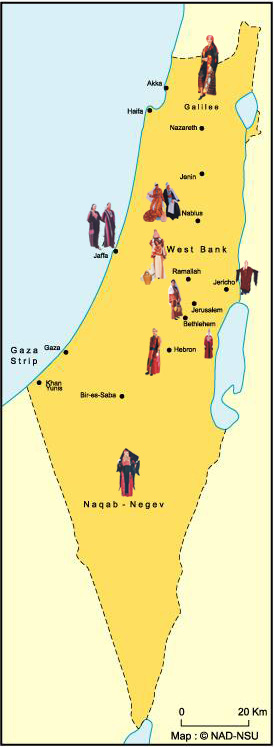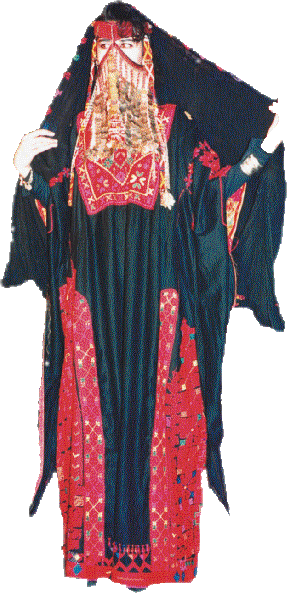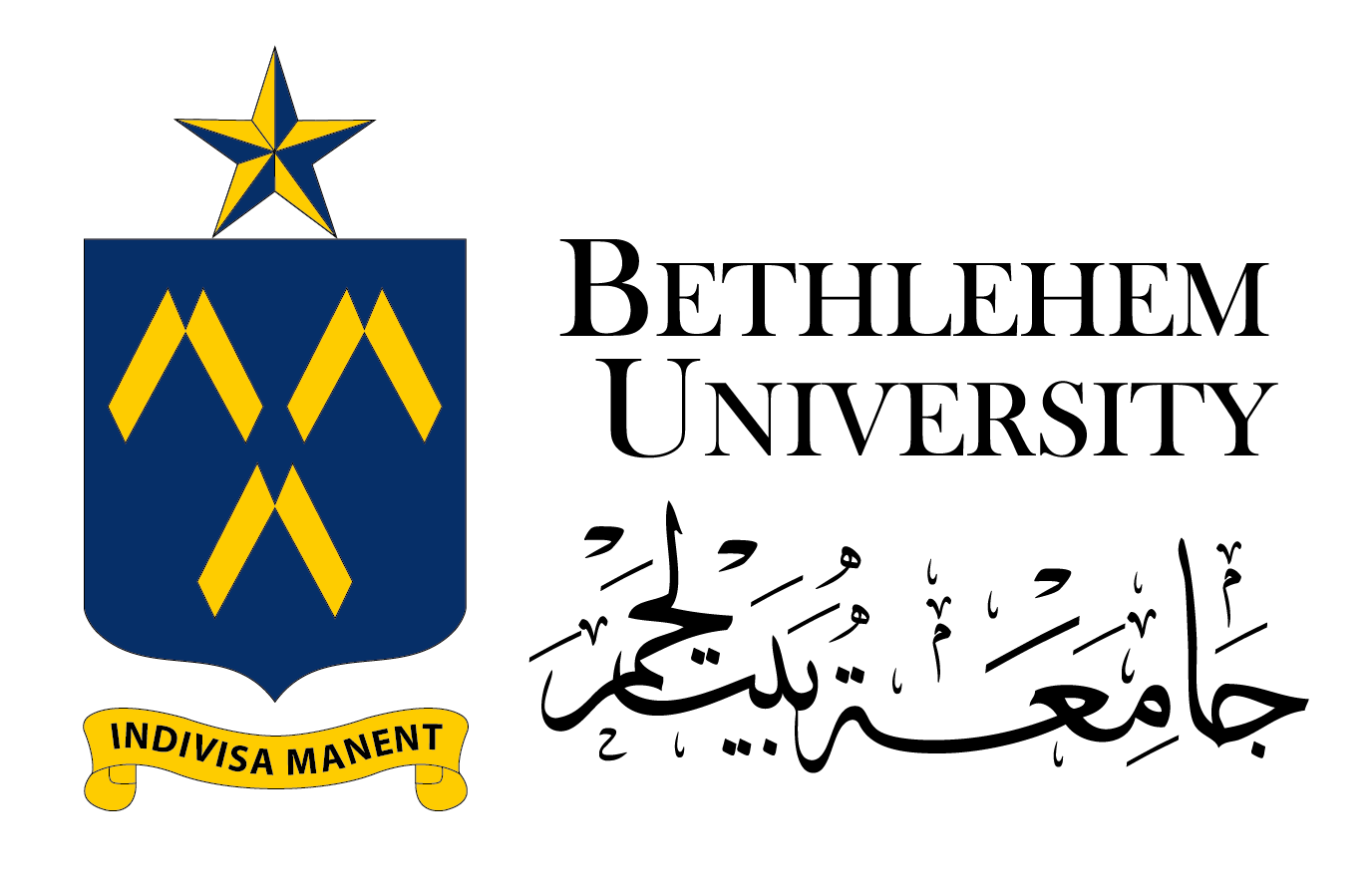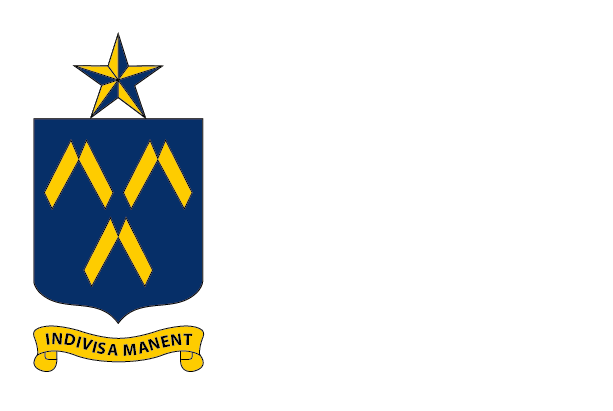
| In the Galilee region the main costume worn by the village women is a type of coat with short sleeves and a front opening. Decoration consists of brightly colored taffeta patches appliquéd inside or outside of the front opening and the motifs are generally geometric. |

| The dresses in Ramallah area have restrained patterns usually in dark red cross-stitch. A favorite motif is the tall-palm. The chest-panel is usually recognized by a V-shaped arch pattern known as a “Kaus. |

| The villagers and Bedouin women from East of Jerusalem to Jericho wear a particularly long dress with large pointed sleeves. The embroidery is simple and consists of vertical rows of zig-zag patterns in white, green, or red. |

| In the Bethlehem region, dresses have fewer motifs and the embroidery is characterized by curvilinear designs of gold and silver thread, filled with bright colored satin stitch. The chest panel of the wedding dress is very heavily embroidered, the sides and sleeves often have inserts of silk, frequently with embroidery. Cornfields abound in the Bethlehem area and the women’s attire in this region reflected this wonderful array of colours of the cornfields. |

| Hebron region dresses are characterized by a high neckline and large chest panel with a V-shaped necklace pattern known as a “Qualayed.”They are lavishly embroidered with cross-stitch in a wide variety of motifs and colors, and the hem of the skirt has a row of multi-colored fish-bone embroidery. |

| Jerusalem’s fashions were influenced by many sources and can be described as “eclectic” having different features from other parts of Palestine. There is a popular dress in the area called “the dress of pieces.” This is made from big patches of fabric (red and green, silk or velvet), with the chest panels, sleeves, and sides embroidered in the Bethlehem style. |

| In the Negev region, the dresses are fuller and bulky with long pointed sleeves. They are heavily embroidered in a variety of colors and motifs, particularly on the back which indicates a woman’s status. Red was worn by married woman, blue for the unmarried, widowed or divorced; and a mixture of blue and red embroidery means that the woman had remarried. The hems are finished with a fine slanting of satin-stitch called “Bedouin stitch.” The sleeves are tied behind the back when the women are working. |

| In coastal towns from Jaffa to Khan Younis, two different types of dresses are found. The first type has little embroidery and is made of special fabric woven in the town of Majdal. Majdal cotton has red and green stripes woven into the fabric. The second type has large chevrons with upside-down cypress trees and pairs of triangles (amulets) on the side panel. |

| In the Nablus/ Jenin/ Tulkarem area, dresses are made of white cotton woven with colored stripes. The chest panel is often made of striped silk. Taffeta inserts rather than embroidery are used for decoration. The dress style is often explained by the fact the women were busy helping with agricultural work and had little time for embroidery. A proverb in this district goes: “Embroidery means a lack of work,” which would imply that embroidery was not part of the social structure in this particular area. |

| Sources: | |
| – Abu Omar, Abed Al-Samih. Traditional Palestinian Embroidery and Jewelry. Jerusalem: Al-Shark Arab Press, 1986 | |
| – Munayyer, Hanan Karaman. Traditional Palestinian Costume: Origins and Evolution. Massachusetts: Olive Branch Press, 2011 | |
| – Rajab, Jehan S. Palestinian Costume. London & New York: Kegan Paul International, 1989 | |
| – Weir, Shelagh. Palestinian Costume. United Kingdom: British Museum Publications, 1989 | |
| – Palestinian Heritage Center, Maha Saca – Bethlehem, Palestine | |
| – Turathuna Center – Bethlehem University |


